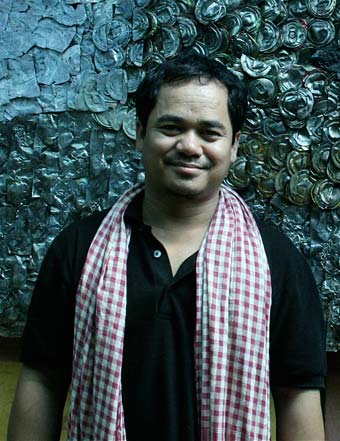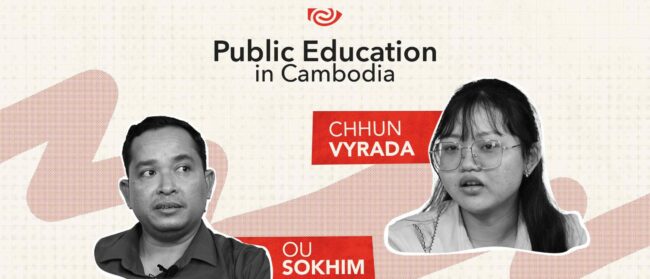A firm believer in the emancipating power of art, Cambodian artist Srey Bandaul co-founded Phare Ponleu Selpak, an art school that aims to offer disadvantaged youth a way out of poverty. In his upcoming exhibition, entitled Digestion, at Phnom Penh’s Romeet Gallery, he reflects on independence and the dynamics between the outside world and the inside, portraying the body as a metaphorical arena of tension.

One of the eye-catching pieces on display in Digestion is a 25-metre intestinal installation. What does it symbolise?
You can say the intestine has a process. When people eat, it goes through the stomach and to the toilet. But it is also connected to the material we use, we are linked together in traditional culture. I used the sarong and krama to make the pictures and the sculptures, so it is like being together in culture and living life in traditional ways.
Your work strives to stimulate imagination…
Yes, of course. In the past, I would use pencils to show reality and give expression through shadow and light. The sculptures are conceptual art, so people cannot just look at them – they need to use their imagination. Many Cambodians don’t understand, they are not that interested in modern art or contemporary art. So we, artists, have to first start to make people think, because we are leaders.
How has your experience of studying art in a Thai refugee camp as a child shaped you as an artist?
I grew up in Site II refugee camp. I moved to the camp aged seven, in 1979, and I returned to Cambodia in 1991. In the refugee camp, art was just a fun children’s game. Our teacher didn’t give classes, she didn’t teach, she just brought materials to the school and if someone did well, she gave them candy or a football to play with. Our school was very small: we studied under a tree.
And now you are a teacher…
When I started, it was really complicated for me to teach, because I didn’t know how. I had never been to art school, so I learnt through experience. Until 2000, the community was really closed. I mean, we were open, but we didn’t have internet, telephones… It was just through discussion with friends that we became more professional.
In 2011, you completed a fellowship in New York. How has that experience influenced your work?
I was there as an Asian Cultural Council Fellow with a residency at the Lower Manhattan Cultural Council. Through these associations I met a lot of artists, curators and critics. I learned a lot from New York. I went to art gallery openings every weekend. I also worked on my new work. I thought: “As a Cambodian with a different culture, how can I make art that is different?” This is what I tried to do, to be different from other artists.
You were also there to research and develop new ideas about art education. Has it led to any major changes in the way you teach?
Not so much yet. There are a lot of students there and they have enough material to work with and a lot of space… They have access to big libraries where they can find anything. That is difficult for me here because what Americans have, we cannot afford. It was a good experience, but it is hard to adapt it to the situation here. My students can only read Khmer, they don’t know how to use a computer, so how can we replicate what is happening in the US? We have built a new curriculum for the art school, with more subjects. We just try to do what we can do.
You have exhibited in many different countries. What exhibition are you most proud of?
The exhibition where I learnt the most abroad, I think, would be in Melbourne. It was a video artwork in collaboration with Australian artists. It was installed on a few big screens in the railway station in Melbourne. People could see and hear the sounds of Khmer songs and words. That exhibition was called The Hawker’s Song.
Related Articles
“Painting Over Tradition” – Armed with creativity, the Cambodia’s young female artists are battling a repressive society
Last Question: John Shors – “There’s such an interest in the future, but it’s also important to understand the past”

